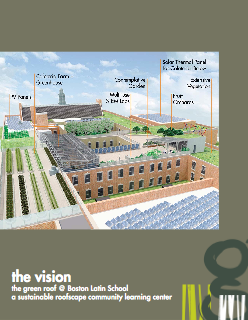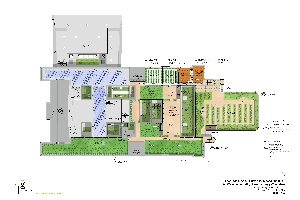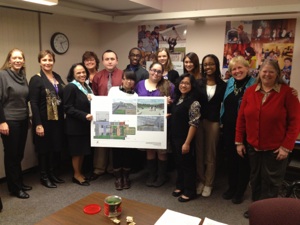The Shared Green Roof






The BLS Green Roof Initiative
The Oldest School, The Newest Thinking: Education for Sustainability

The Project Inception
Cate Arnold, a History teacher at Boston Latin School (BLS), showed An Inconvenient Truth to her students in January 2007. The critical issues of climate change and sustainability generated so much interest that students sent out a school-wide invitation to join in founding a sustainability and climate club. Ninety students came to the first meeting, and the BLS Youth Climate Action Network (YouthCAN) was created. YouthCAN’s accomplishments are as broad and impressive as the impact that the organization is having on the culture of civic engagement and public advocacy at BLS and in the larger Boston Public School system. YouthCAN’s most ambitious and innovative goal is to create a state-of-the-art Shared Green Roof and Community Learning Center (Shared Green Roof), on the BLS rooftop.
The Shared Green Roof
Designed by YouthCAN students and Studio G Architects, with input from community partners at several other BPS schools, the Shared Green Roof will be a year-round laboratory, classroom facility, research station, teacher-training center, garden and fresh-food producer, renewable energy source and a model for how youth leadership and service learning can provide opportunities for community collaboration and integrating education for sustainability into existing curriculum across disciplines and grade levels that improve student outcomes and provide critical 21st century skills. The plans for the rooftop include:
•Indoor and outdoor multi-use classrooms, fully equipped to support and integrate sustainability, climate, and STEM learning (STEM = science, technology, engineering, and math).
•A cafeteria farm and greenhouse to grow healthy food for the school cafeteria while serving as a laboratory for lessons about botany, biology, health and nutrition.
•Renewable energy installations such as photovoltaic (PV) panels, small wind turbines and solar thermal panels that will generate hot water for the school and further reduce the school’s operating costs and carbon footprint while teaching about the science and economic impacts of energy choices and policies.
•Landscaped gardens that provide habitat for birds, bees, and insects; absorb water; and reduce the heat load in the building while providing contemplative spaces where students can explore nature and our role as stewards of the planet through the arts and literature.
•Webcams, interactive information kiosks and sophisticated energy and air-quality monitoring instrumentation that will stream real-time data from the lessons learned on the Shared Green Roof to BLS classrooms and online to other schools in Boston and beyond.
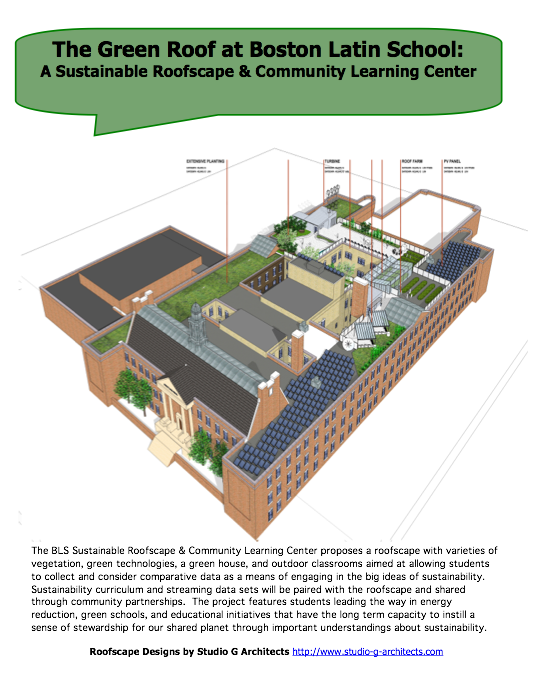
The Educational Imperative
Two very powerful pedagogical ideas underpin YouthCAN’s mission and its vision for the Shared Green Roof. The first is that today’s BLS students have a deep desire to bridge the gulf between their classrooms, their academic work, and the world-at-large. They want to connect learning and understanding with doing, and that passion for engagement is a powerful motivator – especially with today’s emphasis on innovation, entrepreneurship and global connectivity. Consider how much more engaging science, or mathematics is when it’s being conducted in the service of safeguarding the Earth’s and humanity’s future or creating the next “big idea”, as opposed to science or math in the abstract, confined to the blackboard or the pages of a textbook. It is no surprise that research indicates that doing greatly reinforces and enhances learning and understanding.
The second educational paradigm supporting the Shared Green Roof is the opportunity it presents for teaching students an advanced form of interdisciplinary systems thinking and the sophisticated problem solving skills that currently have only an embryonic foothold in the educational offerings so far. The immediate and far-reaching challenges of the 21st century demand complex solutions that utilize the best available information across disciplines and strike a balance between competing and complementary interests - locally and globally. Educating for sustainability imagines sustainability as a Venn diagram – as the crucial overlapping of Economics (globalization, labor costs and supply chains); History (politics and public policy); Science and Technology (natural and applied science, math, engineering and computer modeling); and Ethics (social justice and the concept of stewardship). Future leaders who can’t connect the dots across subject lines, who can’t interpret how a dynamic system is likely to respond to change – direct or induced - will be ineffectual.
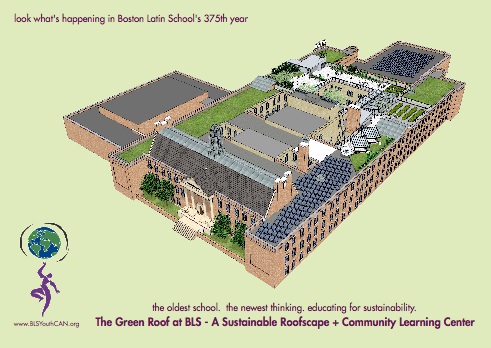
Today, even the best and brightest college preparatory students often have siloed learning - deep reservoirs of isolated and disconnected knowledge - to a great extent molded by the college application process itself. A recent Boston Globe article suggested that topflight students are increasingly engaged in a kind of Advanced-Placement-course arms race, with students striving to take more and more AP courses in an effort to compete. While high scores on Advanced Placement tests remain for the time being one of the important measures of academic excellence, this emphasis on the mastery of large quantities of knowledge within a specific discipline does not address the critical importance of being able to integrate knowledge across those different domains. The schools that find ways to deliver this kind of interdisciplinary learning and that - truly educate for sustainability - will be recognized as the gold-standard in an increasingly interconnected and complex world. These are the educational imperatives for the Shared Green Roof.
In The Future of Value: How Sustainability Creates Value Through Competitive Differentiation, Eric Lowitt describes the importance that sustainability will have to businesses in the near future. It won’t be a public relations or branding issue, nor a “feel-good” issue. Rather, sustainability will be central to profitability and competitiveness. Companies that don’t understand the complex, multilayered challenge of sustainability will not thrive.
Where will the new leaders come from who have the capacity to see the BIG PICTURE, to think outside the box (or the silo), and chart the new course? Where will the nimble minds come from that can wrestle with the interdisciplinary labyrinths of sustainability, climate change, globalization, and the like – that family of challenges that seems to so intractably intertwine science, economics, politics, and social justice?
They will come from the Boston Latin School - with BLS maintaining its rigorous classical curriculum, instilling in its students a deep appreciation for the value of intellectual curiosity, hard work, civic engagement and respect for knowledge – while at the same time becoming a nationally recognized model and innovator in providing its students with the essential interdisciplinary systems thinking, creative problem-solving and hands-on-learning experiences so vital for success in the 21st century. This new breed of leaders will come from Boston Latin School, after they literally and figuratively ascend to the Shared Green Roof.
With nothing short of prescience, YouthCAN students captured this BLS duality, when they described themselves as the Boston Latin School Youth Climate Action Network: The Oldest School, the Newest Thinking: Educating for Sustainability.
Up on The Roof: A Glimpse of the Future
Already, curriculum is being developed to leverage the potentials of this revolutionary and inspiring roof-top learning environment and ideas about how the roof might actually be used are circulating among teachers and students alike. Here are some specific examples:
The Real Cost Kiosk - Have you ever wondered about the “real cost” of that cell phone in your pocket – not the price you paid the merchant - but what it really cost in environmental, human capital and economic terms? The Real Costs Kiosk is a student-led initiative created and supervised by BLS YouthCAN students, designed to engage students and teachers by provoking a deeper awareness of the “real cost” of the everyday things we take for granted – like that cell phone! The Real Costs Kiosk will impart knowledge about these “real costs” and stimulate conversation and critical thinking about sustainability through a fun, interpretive, highly interactive digital display or “kiosk” that will eventually reside at the rooftop sustainability center at the Boston Latin School. Physically situated on the Shared Green Roof, this innovative new teaching and learning tool will also offer an online web feature that students and teachers anywhere may access and use to increase understanding about global sustainability.
The Comprehensive Energy Model (CEM) – The Comprehensive Energy Modeling project is designed to engage students in the natural, computer, and behavioral sciences in an interdisciplinary collaboration to solve a real world problem for BLS and the entire BPS system – that is, how to produce greater energy efficiency and conservation in BPS schools. Working with BLS science faculty and staff at the Green Engineer, students will develop a comprehensive energy model that allows them to monitor performance and test the impacts of various building improvements (i.e. an expanded rooftop photovoltaic array, more vegetative roof cover, better insulation, etc.) on energy consumption and costs at BLS. Under the direction of BLS computer science faculty, students will work with a Lucid Dashboard system studying real time energy consumption data from the roof, as well as the entire building, providing a directly visible feed-back loop designed to raise energy awareness and motivate more sustainable behaviors. Economics and math faculty will work with students to study behavioral changes and energy cost/benefit correlations, challenging them to think more holistically about the impacts of energy policies and practices.
The Art of Sustainability Project – The Art of Sustainability project is an initiative to develop an interactive online digital collection of youth-made art representing youth-led sustainability projects being undertaken all over the world. Whether a video, photograph, drawing, painting, computer generated poster, collage, sculpture, t-shirt design, or something else, the goal is to provide representations of youth-led sustainability work as a tool to inspire further youth action on environmental issues. Art has the power to serve as a sort of universal language engaging people from diverse backgrounds, perspectives and circumstances. The goal is for students to be able to easily access and learn about the challenges that people are facing due to global climate change in other parts of the country and world, and be inspired by the amazing activities that youth are undertaking to address the problems facing their schools and communities. The project will provide an easy way for youth to showcase their work and get feedback and support from others for their initiatives and a ready made body of work for educators to use with their classes. Partnerships with the Gardner Museum and Studio G are also already engaging students in design charrettes to develop proposals for a rooftop gallery of the work as well as some large-scale rooftop art designed to provoke thinking about sustainability. Furthermore, in conjunction with youth-leadership and design aspect of the Shared Green Roof, high-impact school-based sustainability projects developed locally will have the opportunity to seek green roof fellowships that will pair innovative youth-led sustainability projects with volunteer community professionals who will provide pro-bono support for further developing the project along with some seed money.
Garden Top Growing Systems – the rooftop growing systems on the Shared Green Roof will provide hands-on inquiry based opportunities for students to learn in rooftop gardens, green houses, and hydroponics labs, while exploring a wide variety of intersecting disciplines that will promote big picture systems thinking. From studying nitrogen levels, and converting plant material grown in the garden into fuel to power a Teacher’s vehicle, to gaining nutritional understandings or experimenting with hydroponic growing systems, students will study sustainable food production, seek to modify food habits, grow food for our cafeteria, sell food at community markets and gain marketing and economics understandings. Beyond the obvious learning opportunities that these growing spaces will provide in disciplines such as biology, chemistry, physics, students will also learn accounting, business, management, working with real world examples of applied technology such as energy efficiency, liquid and thermal dynamics, digital automation, management and interpretation.
The Pru II Rooftop Classroom – picture a rooftop classroom set up like a mini Omni theater capable of displaying on classroom walls streaming aerial views of Boston as seen in real time from atop the Prudential tower in Boston. Then picture being able to bring up overlays against the backdrop of those cityscapes using GIS Mapping data, and that’s how you get a classroom with the power to educate for sustainability while engaging students in conversations about the social, economic, and environmental issues that involve the life of our city. From urban development and planning, to disaster response, health issues and more, the “Pru II” classroom with its’ 360 views of downtown Boston will engage users in a broad array of public concerns and crosscutting issues. Using data from the Boston Public Health Commission, the Boston Redevelopment Authority, MIT, local colleges and more, the classroom will allow users to explore: areas that sea level rise will impact, higher asthma rates, “food deserts”, high albedo concentrations, storm runoff hot spots, heat island effects, areas with high diesel emissions, community gardens, brown fields development opportunities, farmers markets, green roofs, etc. and study such issues as they correlate with other factors. To continue the service-learning model that the Shared Green Roof has established, student groups would be invited to submit proposals for additional GIS mapping data projects be included for future viewing at Pru II, and correlation studies that they would like to conduct.
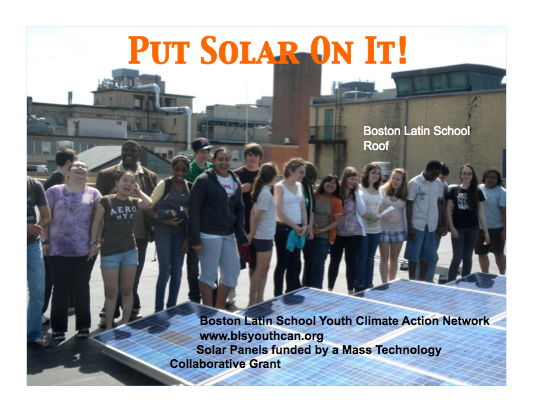
The Shared Green Roof: Resources Needed for Implementation
Based on professional construction cost estimates provided by Daedalus, Byrne McKinney & Associates has prepared a fully loaded development budget for the plan that is designed to deliver 93,500 square feet of new program area on the BLS rooftop. The total development budget is estimated at $6.25M.
As indicated in the table that follows, hard costs for each program element have been estimated and include the creation of two multi-purpose indoor classrooms, one outdoor STEM classroom, a contemplative garden, a production scale greenhouse, a seasonal cafeteria farm and garden, and extensive vegetation.
Handicapped access, primary and secondary means of access, two new lavs, and all systems (electrical, mechanical and plumbing) required to serve the program are included in the estimate.
The existing photovoltaic array will be expanded. Additional photovoltaic panels, solar-thermal panels and wind turbines are expected to be included through partnerships with installer/providers (Power Purchase Agreements/PPA’s) and as fund raising efforts allow.
The cost of the construction (hard cost only) is estimated to total approximately $5.0M including construction labor, materials, contractor profit and general conditions with soft costs contributing another $1.25M bringing the total to $6.25M.
Details concerning the programming, engineering and costing analyses undertaken to inform the current concept plan may be found in the attached Green Roof Feasibility Study. Additional work will be accomplished over the next several months to bring the project to 100% design (see preliminary capital budget chart).
The Shared Green Roof project has already engaged citywide youth task force, gaining the Boston Public Schools Superintendent’s support and Boston Mayor Menino’s attention. The project will provide a facility in Boston where students and educators from across the city and beyond can come to learn how to think in terms of the world’s interconnected systems and be educated for sustainability. We believe the project will serve as a regional and national model filling a critical gap in our current education system. The project was featured on the Today Show and was one of four projects shortlisted in the Americas for the Global High School Prize (100K) in 2012. http://www.blsyouthcan.org/BLS_Youth_C.A.N./Today_Show_Clip.html
Furthermore, many programmatic elements that point to the kind of educational the Shared Green Roof will bring are already in place. For example, BLS students founded a youth climate action network (YouthCAN) that now has 30 member-schools in MA. http://www.blsyouthcan.org/BLS_Youth_C.A.N./Youth_CAN_Network.html
Students host a free Climate Summit at MIT serving hundreds of students and educators annually http://www.blsyouthcan.org/BLS_Youth_C.A.N./Climate_Summit.html. Students run a Mentoring Program for elementary students. We’ve twice sponsored Teacher Institutes on Sustainability drawing 50+ educators, and yielding interdisciplinary sustainability lessons for sharing http://www.blsyouthcan.org/BLS_Youth_C.A.N./Summer_Sustainability_Institute_for_Educators.html
BLS provides a Summer Teen Energy Audit Training Program that’s resulted in 8 youth-led energy audits at other schools. 2012 participants will receive energy-saving implementation funds. http://www.blsyouthcan.org/BLS_Youth_C.A.N./Green_Jobs.html Our Annual Teach-In has tripled demand for environmental courses. http://www.blsyouthcan.org/BLS_Youth_C.A.N./Annual_Teach-In_on_Climate_Change.html
Our Zero-Sort Recycling Program cut trash in half, and was replicated in 50 additional schools. http://www.blsyouthcan.org/BLS_Youth_C.A.N./Recycling.html Our 2-School Composting Pilot has similar goals http://www.blsyouthcan.org/BLS_Youth_C.A.N./Composting.html
Collaboration is a core commitment in our sustainability model. We partner with numerous city officials and government agencies, more than 20 local businesses, 30+ schools, and 35 non-profits. Our work has established BLS as a go-to example for how schools can become greener. Students have presented at Hingham High School, Denver McCormack, and the Boston Green Academy. They’ve also presented to educational organizations (MEES, Primary Source, Mass Audubon, National School Board Association, the Federally Employed Women’s Program at the EPA, and more); at non-profits (TCI, the Children’s Museum, Roots and Shoots; World Wide Waldens; Generation Citizen, ReVision Urban Farm, The Children’s Museum, etc.); and at environmental conferences (Chicago School Building Expo, Cambridge Science Festival, Boston GreenFest, Massachusetts Sustainable Communities, Down to Earth, Moving Planet and more). BLS’s sustainability work has drawn visiting groups from France, Mongolia, Japan, and two from New Zealand, and India. We’ve consulted with groups from Cleveland Ohio, Chicago, Illinois, Los Angeles, California, Providence, RI, and Maine, all who wanted to learn more about our Annual Summit and green schools model.
Boston Latin School is a regional model for how schools can become greener. BLS earned Boston Magazine’s “best green school” in 2010. BLS was the first public school in the nation to receive the Eco-Schools USA Green Flag award. BLS students won the President’s Environmental Youth Award, and an EPA Merit Award. The school was nominated by Massachusetts in 2013 for the federal government’s Green Ribbon School award. BLS YouthCAN a youth-led grassroots organization at the forefront of the green schools movement, leading the way in community partnerships, youth leadership, and what education for sustainability and service learning should really look like.






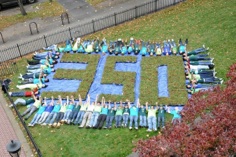



Click above to download an
updated walk-through

Project Report
Project Images


Presenting the Roof Project to the Mayor in February 2012

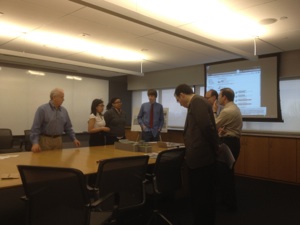
Presenting to an Architecture Firm in Cambridge, MA
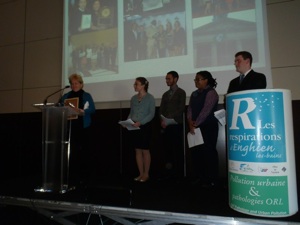

Presenting the project at Les Respirations and the Oxygen Awards in France



Community Visioning Event with EPA Administrator Spalding at the Gardner Museum







Click here to see more photos of our green roof presentation to the Superintendent of the BPS, Dr. Johnson



